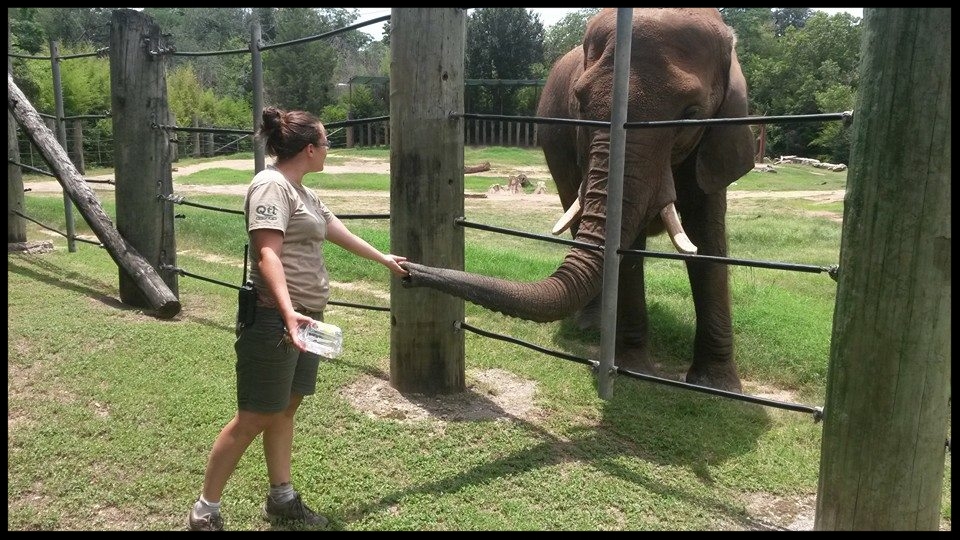Animal Training Techniques: From Household Pets to Zoo Animals
Animal training has evolved significantly over the years, blending scientific understanding with practical application to improve the welfare and behavior of both household pets and zoo animals.
Effective training not only enhances the relationship between humans and animals but also ensures the safety and well-being of the animals involved.
This article explores various training techniques used for domestic pets and zoo animals, examining their principles, applications, and benefits.
Principles of Animal Training
Positive Reinforcement
Positive reinforcement is the cornerstone of modern animal training. This technique involves rewarding desired behaviors to encourage their recurrence. Rewards can be treats, praise, toys, or any other stimulus that the animal finds rewarding. The key is to provide the reward immediately after the desired behavior to reinforce the connection between the behavior and the reward.
For example, when training a dog to sit, the trainer would give the command "sit," wait for the dog to sit, and then immediately reward the dog with a treat and praise. Over time, the dog learns to associate sitting with receiving a reward and is more likely to sit on command.
Positive reinforcement is effective for a wide range of animals, from dogs and cats to birds and even marine mammals. This technique not only teaches specific behaviors but also fosters trust and strengthens the bond between the trainer and the animal.
Clicker Training
Clicker training is a popular method of positive reinforcement that uses a small device that makes a clicking sound to mark the desired behavior. The click is followed by a reward, helping the animal to understand precisely which behavior earned the reward.
This technique is highly effective because the click sound is distinct and consistent, providing a clear signal to the animal.
Clicker training is widely used for training dogs, cats, birds, and even horses. It allows for precise communication and can be used to teach a variety of behaviors, from basic commands to complex tricks. The consistency and clarity of the clicker make it a powerful tool in animal training.
Operant Conditioning
Operant conditioning involves using consequences to modify behavior. Positive reinforcement is one aspect of operant conditioning, but it also includes negative reinforcement (removing an unpleasant stimulus to increase a behavior), positive punishment (adding an unpleasant stimulus to decrease a behavior), and negative punishment (removing a pleasant stimulus to decrease a behavior).
While positive reinforcement is generally preferred, understanding the principles of operant conditioning helps trainers develop a comprehensive approach to behavior modification. For instance, if a dog jumps on people for attention, ignoring the dog (negative punishment) until it calms down and then rewarding it for calm behavior can be an effective strategy.
Desensitization and Counter-Conditioning
Desensitization involves gradually exposing an animal to a stimulus that causes fear or anxiety at a low intensity, slowly increasing the exposure as the animal becomes more comfortable. Counter-conditioning pairs the exposure to the feared stimulus with something positive, such as treats or play, to change the animal's emotional response.
These techniques are particularly useful for addressing fear and aggression in animals. For example, if a dog is afraid of thunderstorms, playing a recording of thunder at a low volume while offering treats can help the dog associate the sound with positive experiences, reducing its fear over time.
Training Household Pets
Dogs
 Training dogs is a common practice, with techniques ranging from basic obedience to advanced skills. Basic commands such as sit, stay, come, and heel are essential for ensuring a dog's safety and enhancing its relationship with its owner. Advanced training can include agility, search and rescue, therapy work, and service dog tasks.
Training dogs is a common practice, with techniques ranging from basic obedience to advanced skills. Basic commands such as sit, stay, come, and heel are essential for ensuring a dog's safety and enhancing its relationship with its owner. Advanced training can include agility, search and rescue, therapy work, and service dog tasks.
Positive reinforcement and clicker training are widely used for training dogs. Consistency, patience, and clear communication are crucial for successful training. Additionally, socialization is an important aspect of dog training, exposing the dog to various environments, people, and other animals to develop well-rounded behavior.
Cats
Training cats is often overlooked, but they are capable of learning a variety of behaviors and tricks. Litter box training, using scratching posts, and basic commands like sit and come can improve a cat's behavior and integration into the household.
Positive reinforcement and clicker training can be used effectively with cats. Training sessions should be short and engaging, as cats can lose interest quickly. Using high-value rewards, such as favorite treats, can motivate cats to learn new behaviors.
Birds
Birds, particularly parrots, are highly intelligent and can learn a wide range of behaviors and tricks. Training can include basic commands, such as step up and step down, as well as more complex tricks like talking, playing games, and performing routines.
Positive reinforcement and clicker training are effective for training birds. Training sessions should be brief and fun to keep the bird engaged. Socialization and mental stimulation are also important for the well-being of pet birds.
Training Zoo Animals

Enrichment and Welfare
Training zoo animals is essential for their welfare and management. Training allows zookeepers to perform health checks, administer medication, and move animals without causing stress. It also provides mental and physical stimulation, which is crucial for the well-being of captive animals.
Positive reinforcement is the primary method used for training zoo animals. This approach builds trust and cooperation between the animal and the keeper, making routine care and medical procedures easier and safer.
Large Mammals
Training large mammals, such as elephants, lions, and bears, requires specialized techniques due to their size and strength. Training sessions focus on basic husbandry behaviors, such as presenting body parts for examination, entering and exiting enclosures, and cooperating with veterinary procedures.
For example, elephants can be trained to present their feet for inspection, allowing keepers to check for injuries or infections. Lions can be trained to enter transport crates voluntarily, reducing stress during relocations. Positive reinforcement is key to building trust and ensuring the safety of both the animals and the keepers.
Marine Mammals
Marine mammals, such as dolphins, sea lions, and whales, are known for their trainability and intelligence. Training these animals involves teaching them to perform various behaviors for public demonstrations, research, and medical care.
Positive reinforcement and clicker training are widely used with marine mammals. Training sessions often include behaviors that mimic natural activities, such as jumping, diving, and retrieving objects, which provide both mental and physical stimulation. Medical behaviors, such as allowing blood draws or ultrasounds, are also crucial for maintaining the health of marine mammals.
Birds of Prey
Training birds of prey, such as eagles, hawks, and owls, is essential for their care and public education programs. Training focuses on basic husbandry behaviors, such as stepping onto a glove, flying to a designated perch, and tolerating medical procedures.
Positive reinforcement and operant conditioning are effective methods for training birds of prey. Training sessions should be tailored to each bird's temperament and learning pace. Enrichment activities, such as flying exercises and hunting simulations, are also important for their well-being.
Ethical Considerations and Future Directions
Animal Welfare
Ethical considerations are paramount in animal training. Ensuring the physical and emotional well-being of the animals is the primary concern. Training should always be conducted using humane and positive methods that do not cause fear, pain, or distress.
Understanding the natural behaviors and needs of each species is essential for developing effective and ethical training programs. Providing adequate enrichment, socialization, and stimulation is crucial for the welfare of both household pets and zoo animals.
Advances in Training Techniques
Advances in animal behavior science continue to improve training techniques. Research into animal cognition and communication provides valuable insights into how animals learn and interact with their environment. These findings help trainers develop more effective and humane methods for teaching and managing animal behavior.
Technological innovations, such as remote training devices and virtual reality simulations, are also expanding the possibilities for animal training. These tools can enhance training programs and provide new ways to engage and stimulate animals.
Education and Public Awareness
Educating the public about humane and effective training methods is important for promoting animal welfare. Pet owners, zookeepers, and trainers can benefit from resources and training programs that emphasize positive reinforcement and ethical practices.
Public awareness campaigns can also highlight the importance of responsible pet ownership and the benefits of training for both animals and humans. By promoting a culture of kindness and respect for animals, we can improve the lives of animals in our care.
Conclusion
Animal training techniques have come a long way, from basic obedience training for household pets to complex husbandry behaviors for zoo animals. Positive reinforcement, clicker training, and operant conditioning are effective methods that build trust and improve the welfare of animals. Ethical considerations and advances in training techniques continue to shape the future of animal training, ensuring that animals receive the care and enrichment they need.
Understanding and applying these techniques can enhance the bond between humans and animals, creating a more harmonious and fulfilling relationship. Whether training a pet dog to sit or teaching an elephant to present its foot for inspection, the principles of humane and effective training remain the same: patience, consistency, and respect for the animal's well-being.
Sources
- Position Statement on Humane Dog Training - Malena DeMartini
- PetMD - Positive Reinforcement Training for Dogs
- Positive reinforcement training

































